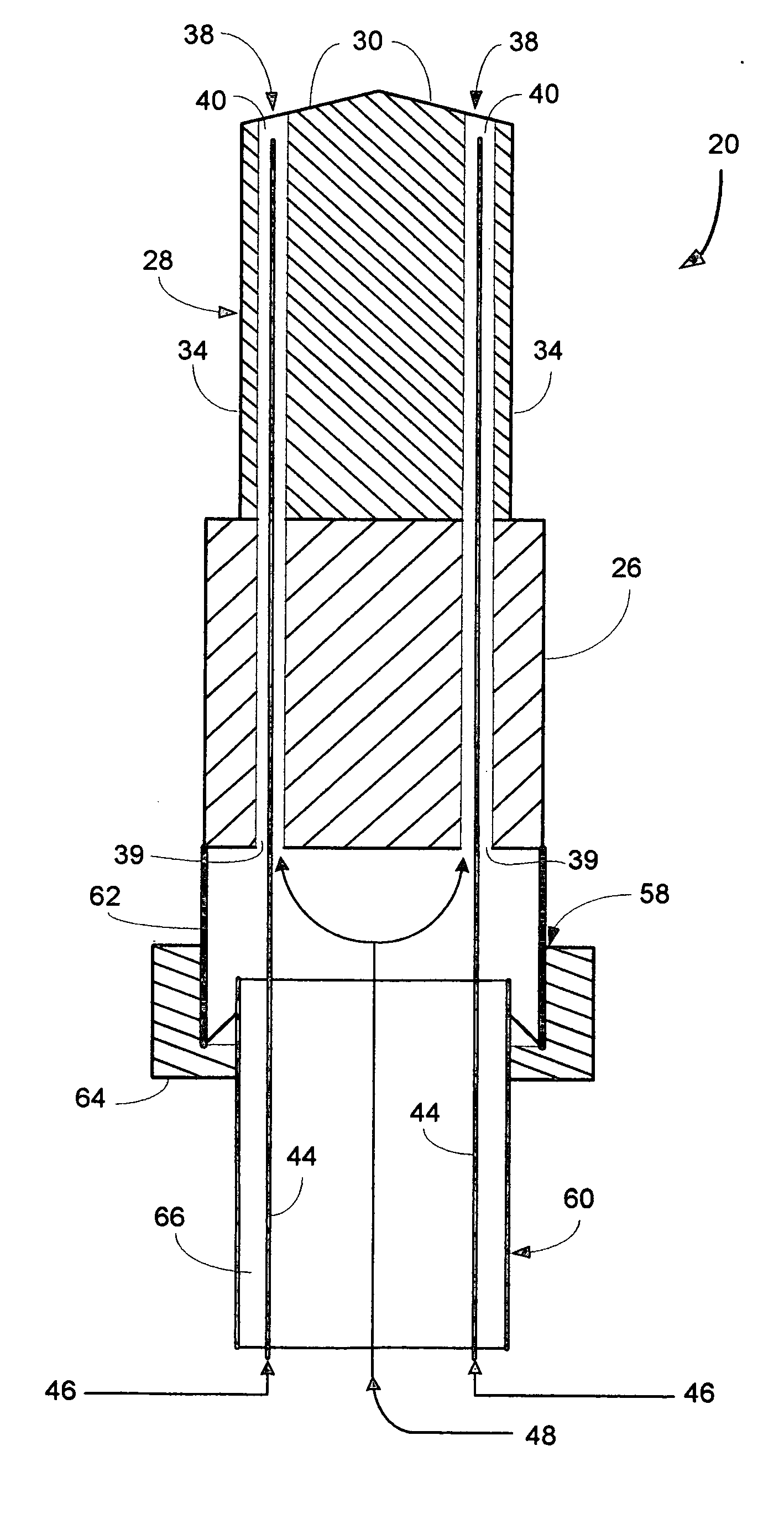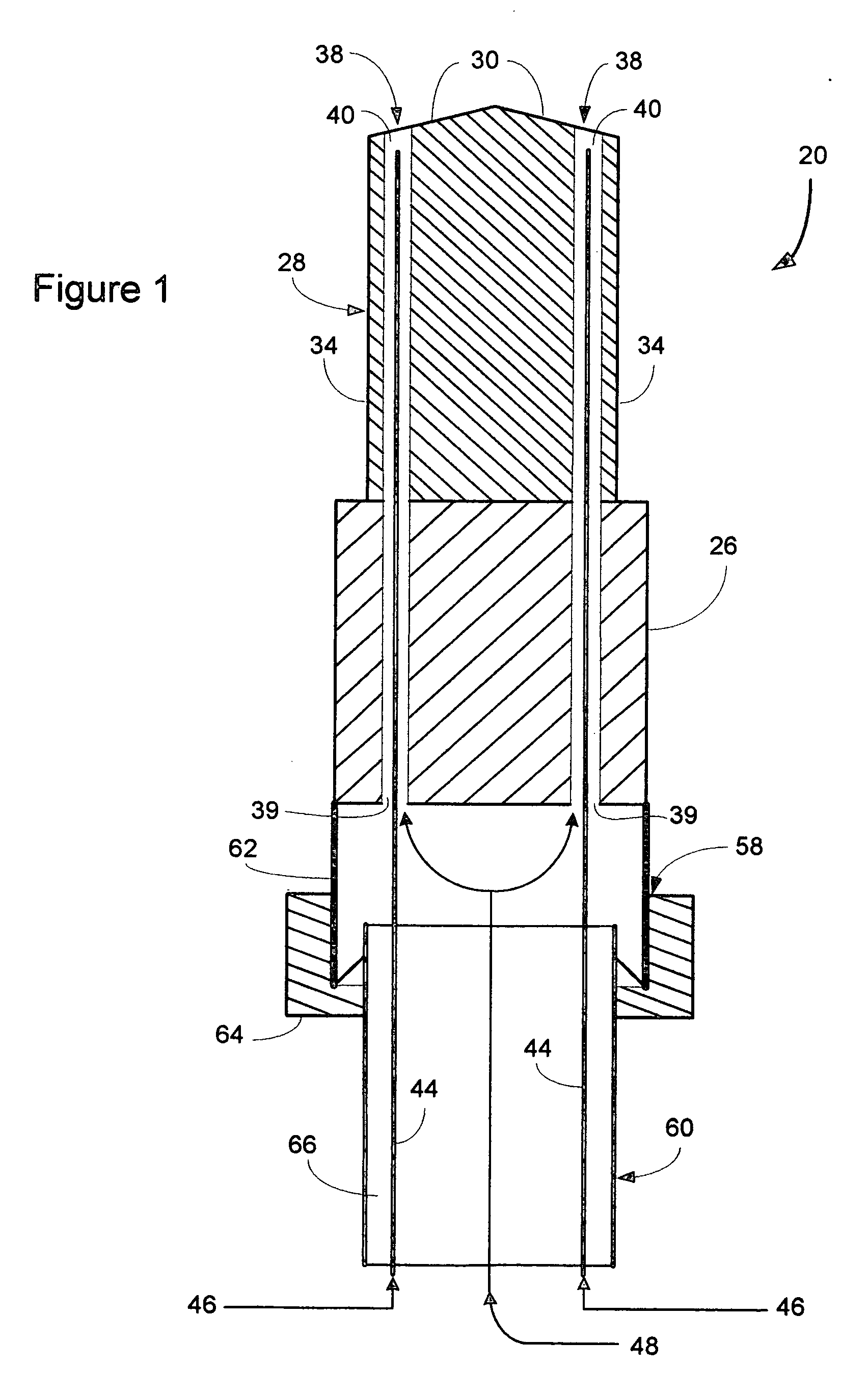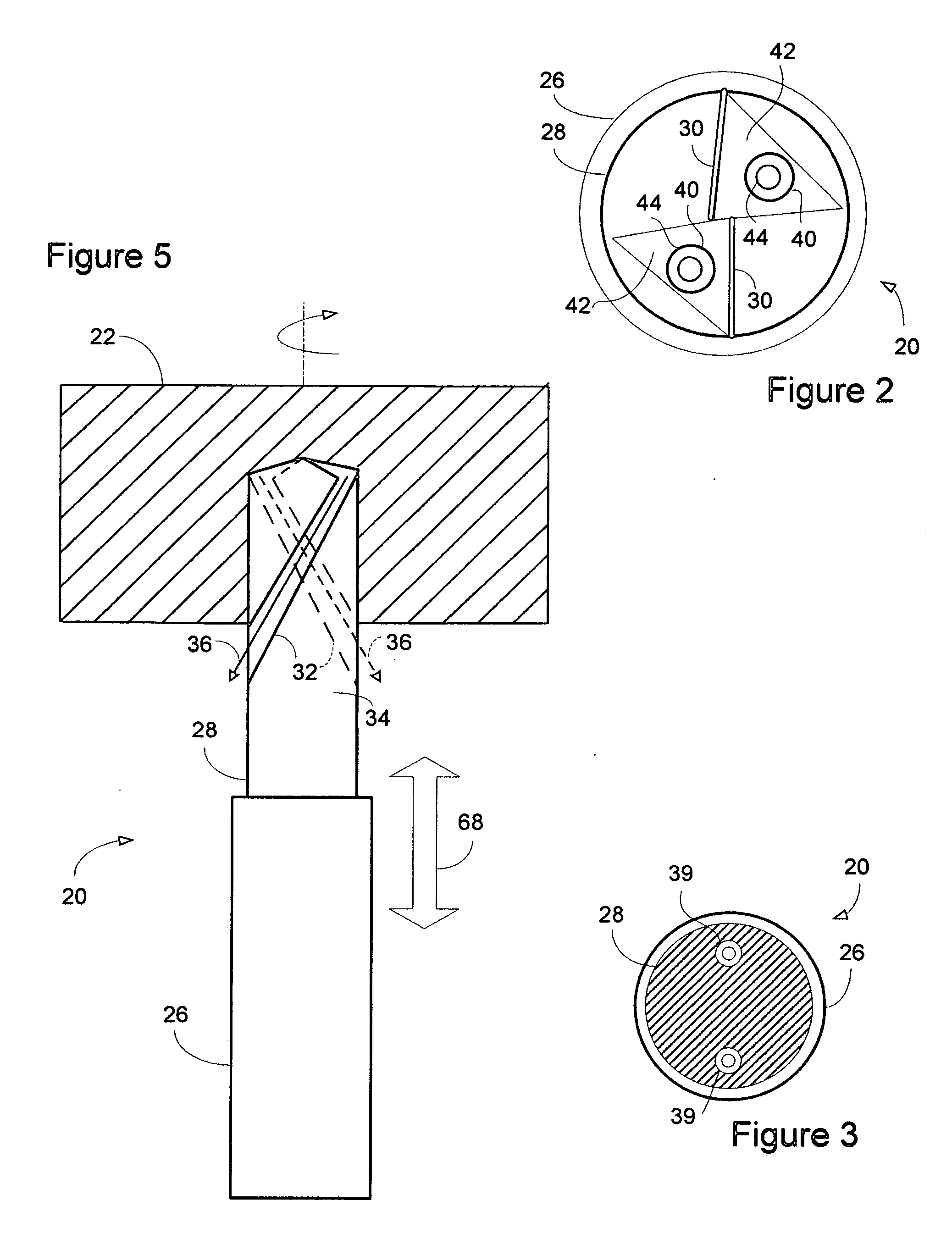Device for applying cryogenic composition and method of using same
a technology of cryogenic composition and device, which is applied in the direction of manufacturing tools, container discharge methods, mechanical instruments, etc., can solve the problems of cratering, cracking and failure of the entire insert along the cutting edge, and abrasion between the cutting insert and the workpi
- Summary
- Abstract
- Description
- Claims
- Application Information
AI Technical Summary
Problems solved by technology
Method used
Image
Examples
Embodiment Construction
[0021] A dual ported spray-through machining tool of the present invention is generally indicated at 20 in FIG. 1. The tool 20 is designed for simultaneously cutting a substrate workpiece 22 while delivering a cryogenic composite machining fluid or spray 24 to the workpiece for cooling or lubricating the workpiece, cooling the tool, or a combination of both. The machining tool 20 of the present invention generally comprises a shank or tool holder portion 26 with a bit portion 28 connected thereto. The shank 26 is preferably engageable with a suitable chuck (not shown) to operably position the machining tool 20 proximate the workpiece 22. The bit portion 28 includes various cutting edges 30 for contacting the workpiece 22. Evacuation channels 32, preferably in a semi-spiral configuration, are positioned on outer surfaces 34 of the bit 28 for directing spent gases and chips 36 formed during the machining process away from the workpiece 22, as illustrated in FIG. 2.
[0022] To deliver t...
PUM
 Login to View More
Login to View More Abstract
Description
Claims
Application Information
 Login to View More
Login to View More - R&D
- Intellectual Property
- Life Sciences
- Materials
- Tech Scout
- Unparalleled Data Quality
- Higher Quality Content
- 60% Fewer Hallucinations
Browse by: Latest US Patents, China's latest patents, Technical Efficacy Thesaurus, Application Domain, Technology Topic, Popular Technical Reports.
© 2025 PatSnap. All rights reserved.Legal|Privacy policy|Modern Slavery Act Transparency Statement|Sitemap|About US| Contact US: help@patsnap.com



